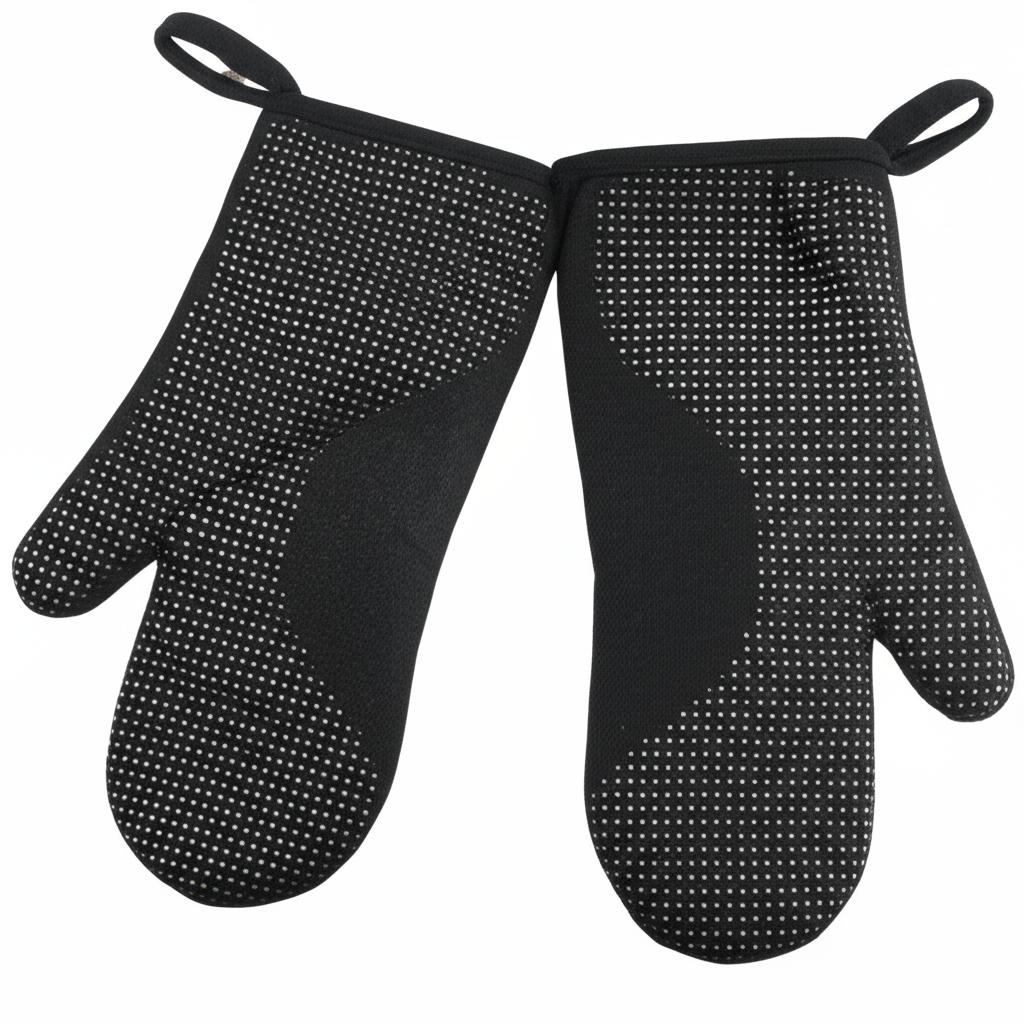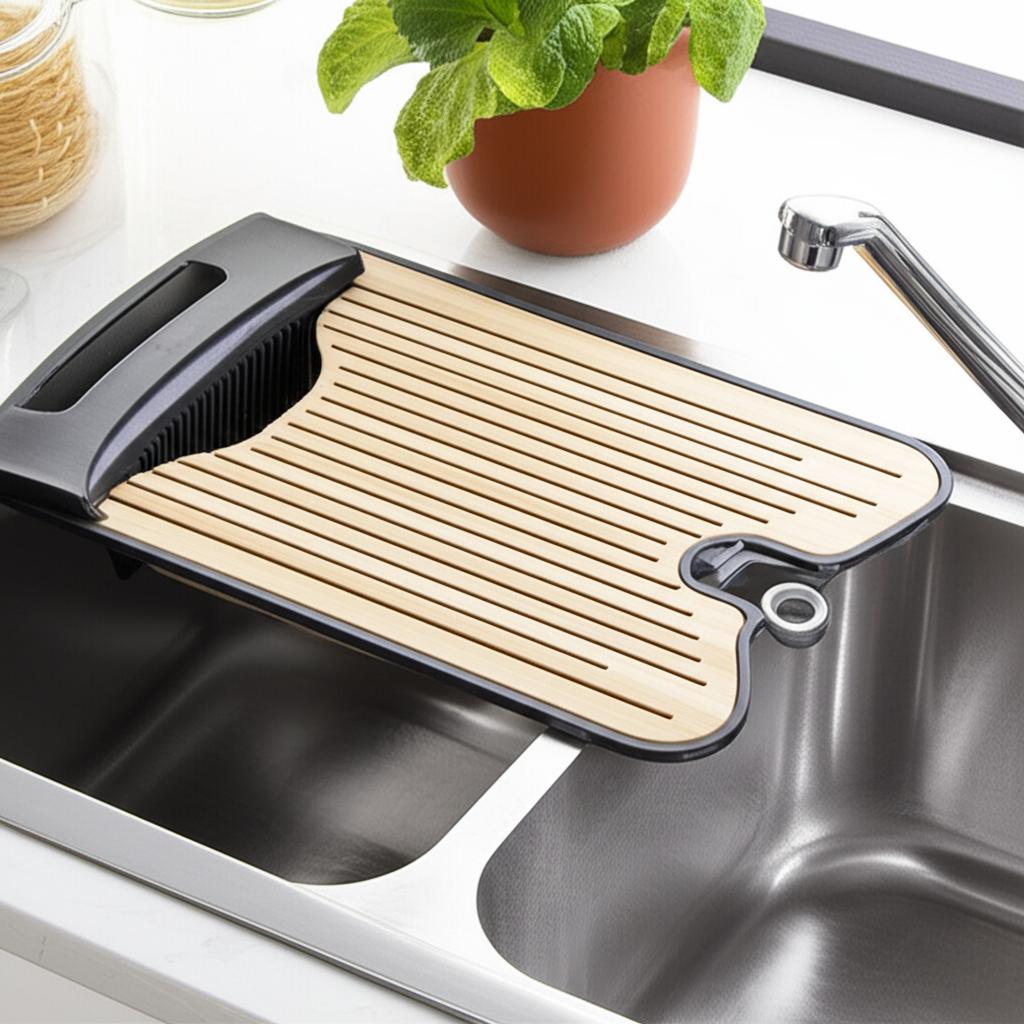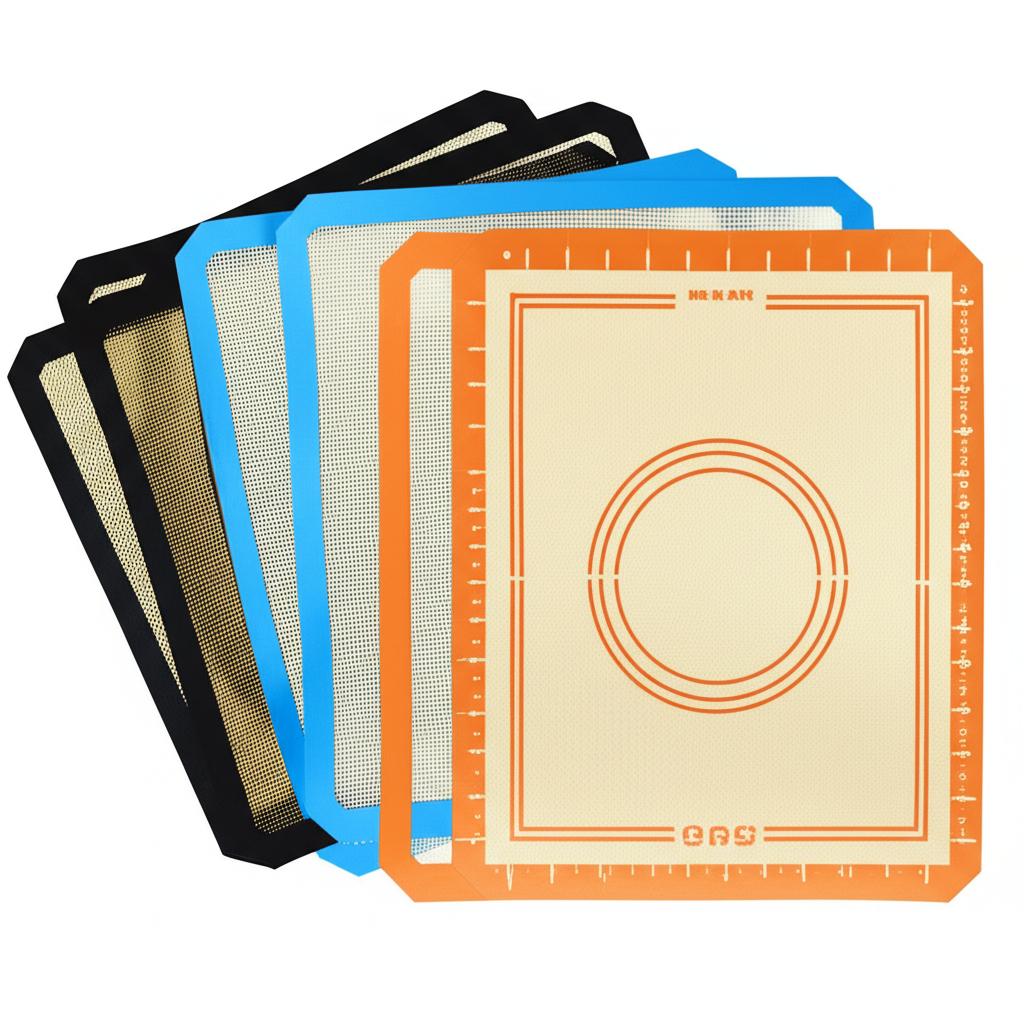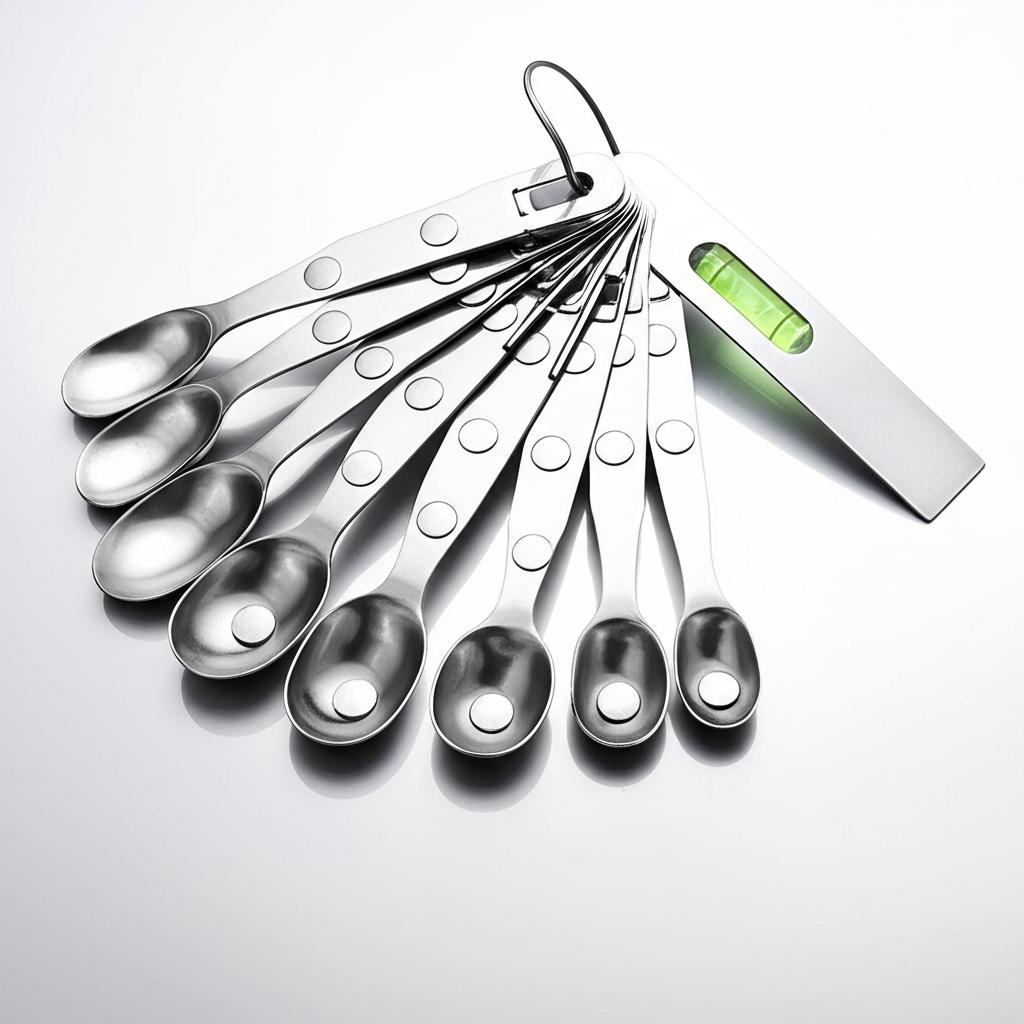
Picture this: You’re pulling a bubbling lasagna out of a scorching hot oven, or perhaps a perfectly roasted chicken, when suddenly, your old, flimsy oven mitt slips. The heart-stopping moment as the pan tilts, the contents threaten to spill, and your hand barely escapes a nasty burn. Sound familiar? It’s a common kitchen nightmare, but one that’s easily avoidable with the right gear.
In the bustling heart of any home – the kitchen – safety should always be paramount. And when it comes to handling blistering hot bakeware, pots, and pans, your trusty oven mitts are your first line of defense. But not just any mitts will do. To truly elevate your kitchen safety and confidence, you need to invest in heat-resistant oven mitts with extra grip. These aren’t just a luxury; they’re an absolute necessity for anyone who takes cooking seriously, from the novice baker to the seasoned grill master.
This comprehensive guide will delve deep into why these specialized mitts are a game-changer, what features make them superior, and how to choose the perfect pair that will keep your hands safe, secure, and ready for any culinary challenge.
Why Heat-Resistant Oven Mitts with Extra Grip Are a Kitchen Game-Changer
Forget those sad, thin fabric mitts that offer more hope than protection. Modern cooking demands a new standard of safety, and that’s where the combination of superior heat resistance and unparalleled grip truly shines.
Enhanced Safety and Burn Prevention
The most obvious benefit is, of course, protection from burns. Our kitchens are filled with potential hazards – ovens cranked to 400°F+, bubbling liquids, and sizzling hot trays. A good pair of heat-resistant oven mitts acts as a robust thermal barrier, shielding your skin from direct contact with extreme temperatures. This isn’t just about avoiding a painful blister; it’s about preventing severe burns that can sideline you from your culinary passion, or worse, require medical attention. Investing in mitts designed to withstand high temperatures means you can confidently handle dishes straight from the oven or grill without a second thought about the heat.
Unmatched Control and Confidence
This is where the “extra grip” really comes into play. Imagine trying to lift a heavy cast-iron skillet, slick with grease, using a smooth, cotton mitt. It’s a recipe for disaster. Enhanced grip, often achieved through silicone patterns, textured surfaces, or specialized coatings, provides a secure hold on even the most slippery dishes. This firm grasp translates directly into greater control and, crucially, increased confidence in the kitchen. You’ll worry less about dropping that prized roast or spilling that hot soup, allowing you to focus on the task at hand – creating delicious food. This added control also significantly reduces the risk of accidents, protecting not just your hands, but also your valuable kitchenware and floor.
Versatility Beyond the Oven
While “oven mitts” are in their name, their utility extends far beyond just retrieving items from the oven. Their heat resistance and superior grip make them indispensable for a wide range of kitchen and even outdoor cooking tasks. From handling hot pots on the stovetop and moving heavy baking stones to managing smoking racks on the BBQ and even changing hot lightbulbs, these mitts prove their worth time and time again. They become an all-around utility tool, simplifying tasks that would otherwise require multiple layers of towels or risky maneuvers.
Decoding the Anatomy of Superior Grip and Heat Protection
What exactly goes into making oven mitts truly heat-resistant and grippy? It’s a combination of advanced materials and smart design.
Understanding Heat Resistance Ratings
Not all heat resistance is created equal. Oven mitts are typically rated for specific temperature ranges, and understanding these is crucial:
- Low to Moderate Heat (up to 200-300°F): Often seen in basic cotton or terry cloth mitts. These are fine for quick grabs of slightly warm dishes but offer minimal protection against true oven heat.
- High Heat (up to 500-650°F): This is the sweet spot for most home kitchen use. Mitts in this category often combine materials like silicone, aramid fibers (like Kevlar or Nomex), and specialized cotton blends. They are suitable for almost all baking, roasting, and stovetop needs.
- Extreme Heat (up to 932°F or higher): Primarily designed for serious grilling, BBQ, smoking, or even industrial use. These mitts heavily rely on advanced aramid fibers and sometimes incorporate layers of silicone. If you’re frequently working with very high heat, such as a wood-fired pizza oven, these are what you need.
The Science Behind Extra Grip
The “extra grip” isn’t just a marketing gimmick; it’s a critical design feature. It typically involves:
- Silicone Patterns: The most common and effective method. Silicone itself is naturally non-slip and can withstand high temperatures. It’s often molded into raised patterns like dots, lines, honeycomb grids, or waffled textures. These patterns increase the surface area that comes into contact with the item, creating friction and preventing slippage. The raised elements also allow for a better grasp around contours.
- Textured Fabrics: Some high-performance fabric mitts might have a textured weave or incorporate rubberized threads to enhance grip, though this is usually less effective than silicone.
- Non-Slip Coatings: Less common, but some fabric mitts might feature a thin, heat-resistant, non-slip coating on the palm and fingers.
These grip technologies work by maximizing the coefficient of friction between the mitt and the hot object, ensuring a secure hold even when dealing with heavy, smooth, or awkward items.
Key Features to Look for in High-Performance Oven Mitts
When you’re ready to upgrade, keep an eye out for these essential features to ensure you’re getting the best heat-resistant oven mitts with extra grip for your needs.
1. Material Composition
- Silicone: Excellent for both heat resistance and grip. Silicone mitts are often fully silicone or have extensive silicone coverage on the palm and fingers. They are waterproof, easy to clean (often wipeable), and offer superb non-slip properties.
- Aramid Fibers (Kevlar, Nomex): These synthetic fibers are incredibly strong and heat-resistant, used in everything from bulletproof vests to firefighter gear. When woven into oven mitts, they offer exceptional thermal protection, often exceeding 500°F. They are usually combined with a soft inner lining for comfort and an outer silicone pattern for grip.
- Cotton/Terry Cloth: While comfortable, pure cotton mitts offer limited heat resistance unless they are extremely thick or heavily insulated. They are often used as the soft inner lining in more advanced mitts to absorb sweat and provide comfort.
- Neoprene: Often found in grilling gloves, neoprene offers good heat resistance and flexibility, along with water resistance, making it suitable for outdoor cooking where spills are common.
2. Grip Technology
As discussed, look for pronounced silicone patterns (dots, lines, honeycomb, waffled textures) on the gripping surfaces. Ensure the grip extends across the entire palm and fingers for maximum security. Some mitts feature grip on both sides, making them ambidextrous.
3. Dexterity and Flexibility
A common complaint about older, bulkier oven mitts is their lack of dexterity. You want mitts that allow you to feel and manipulate objects somewhat. While you won’t be picking up individual grains of rice, you should be able to securely grasp handles, edges, and corners without feeling like your hands are encased in rigid blocks. Materials like aramid fibers often offer better flexibility than thick, rigid silicone.
4. Comfort and Fit
- Lining: A soft, breathable inner lining (often cotton or polyester) is crucial for comfort, especially during extended use. It also helps absorb sweat.
- Size: Check if the mitts come in different sizes or if they are “one size fits all.” Ensure they fit snugly but comfortably, allowing for full hand movement without feeling too loose or too tight.
- Long Cuffs: Mitts with extended cuffs that go up your forearm provide crucial protection against accidental contact with hot oven racks or splashes from boiling liquids. Aim for cuffs that are at least 5-7 inches long beyond your wrist.
5. Durability and Easy Cleaning
- Construction: Look for strong stitching and robust materials that won’t easily tear or fray.
- Cleaning: Consider how easy they are to clean. Silicone mitts can often be simply wiped down or rinsed. Fabric-based mitts (especially those with aramid fibers) are often machine washable, which is a huge plus for hygiene and convenience.
Beyond the Oven: Versatile Uses for Your Grippy Mitts
Once you own a pair of high-quality heat-resistant oven mitts with extra grip, you’ll discover their utility extends far beyond just pulling a casserole dish from the oven.
- Grilling and BBQ: Absolutely essential for moving hot grates, adjusting coals, handling searing hot meat, or even reaching into a smoker. Many mitts specifically designed for grilling offer even higher heat resistance.
- Handling Hot Pots and Pans on the Stovetop: Moving heavy stockpots, cast iron skillets, or hot woks with confidence.
- Working with Cast Iron: Cast iron retains heat for a very long time. These mitts are perfect for maneuvering hot cast iron dishes from the stove to the table.
- Canning: Safely handling hot jars and lids during the canning process.
- Camping and Campfires: Ideal for managing campfire cooking, adjusting logs, or moving hot embers.
- Opening Stubborn Jars: Believe it or not, the enhanced grip can be a lifesaver for opening tight jar lids without straining your hand.
- Changing Hot Lightbulbs: For those hard-to-reach or recently used bulbs that are still warm.
- Fireplace Maintenance: Safely adding logs or adjusting grates in a hot fireplace.
Choosing the Perfect Pair: A Buyer’s Guide
With so many options on the market, how do you pick the right heat-resistant oven mitts with extra grip for you?
-
Assess Your Primary Use:
- Everyday Home Baker/Cook: A mitt rated for 500-650°F with good silicone grip on the palm and fingers is usually sufficient. Look for comfort and flexibility.
- Serious Griller/Smoker: You’ll want mitts rated for higher temperatures (900°F+) with full hand protection, possibly individual fingers for better dexterity (gloves vs. mitts). Look for aramid fiber blends with robust silicone grip.
- Multi-purpose Kitchen Warrior: A versatile pair that balances high heat resistance with good dexterity and superior grip will serve you well across various tasks.
-
Consider Your Heat Needs: Don’t underbuy on heat resistance. If you frequently use high oven temperatures or handle very hot items, opt for higher ratings. It’s better to have more protection than you need than not enough.
-
Check for Ambidextrous Design: Many mitts are designed to fit either hand, which is convenient. Some specialized gloves might be left/right specific for a more tailored fit.
-
Read Reviews: Real-world feedback from other users is invaluable. Look for comments on heat protection, grip effectiveness, comfort, durability, and ease of cleaning.
-
Budget vs. Quality: While it’s tempting to go for the cheapest option, your safety is worth the investment. Quality heat-resistant mitts typically last longer and perform better, ultimately offering better value. Aim for a balance between cost and features.
Tips for Maximizing the Life and Performance of Your Oven Mitts
Once you’ve got your fantastic new mitts, proper care will ensure they last and perform optimally.
- Follow Cleaning Instructions: Always adhere to the manufacturer’s cleaning recommendations. Silicone mitts often wipe clean, while fabric mitts might be machine washable. Improper washing can degrade heat resistance or damage the grip.
- Ensure They Are Dry Before Use: Never use wet or damp oven mitts. Water conducts heat, meaning a wet mitt will transfer heat much faster and offer significantly less protection, potentially causing severe burns. Always ensure they are thoroughly dry before touching anything hot.
- Store Properly: Hang your mitts by their loops (if they have them) in a well-ventilated area. Avoid crumpling them into a drawer, which can trap moisture or compromise their shape over time.
- Inspect Regularly: Before each use, quickly check your mitts for any signs of wear and tear – thinning spots, tears, holes, or degraded grip patterns.
- Know When to Replace Them: Oven mitts don’t last forever. If they show significant signs of wear, if you feel heat through them more easily than before, or if the grip is visibly worn down, it’s time to replace them. Don’t gamble your safety.
Common Mistakes to Avoid When Using Oven Mitts
Even with the best heat-resistant oven mitts with extra grip, improper usage can lead to accidents.
- Using Wet or Damp Mitts: As emphasized, this is a major hazard. The steam created when a wet mitt touches a hot surface can cause immediate and severe burns.
- Ignoring Temperature Ratings: Don’t assume all mitts can handle all temperatures. Using a 300°F-rated mitt for a 500°F task is asking for trouble.
- Using Worn-Out or Damaged Mitts: A small tear or thinning spot might seem insignificant, but it can be a direct path for heat to reach your skin.
- Assuming All Mitts Are the Same: Clearly, they are not! The quality, materials, and design vary wildly. Do your research.
- Not Prioritizing Grip: While heat resistance is crucial, neglecting the grip aspect is a common mistake. A mitt that protects from heat but lets the dish slip is still a major safety risk.
- Touching Open Flames Directly (Unless Rated For It): Most mitts are designed for indirect heat. Unless specifically stated (like some high-temp grilling gloves), avoid prolonged direct contact with open flames, as this can damage the materials.
The Future of Kitchen Safety: Innovations in Oven Mitt Design
The evolution of oven mitts continues, driven by advanced material science and a focus on user comfort and safety. We’re seeing:
- Smarter Material Blends: Combinations of aramid fibers, silicone, and other synthetic materials are leading to mitts that are thinner, more flexible, and yet offer even higher heat resistance.
- Ergonomic Designs: Mitts are becoming more anatomically shaped, with individual finger slots (turning them into gloves) for superior dexterity, or more flexible joint areas to reduce hand fatigue.
- Antimicrobial Properties: Some newer mitts are incorporating materials with antimicrobial properties to inhibit bacterial growth and keep them cleaner.
- Eco-Friendly Options: A growing trend towards using recycled materials or more sustainably sourced components in their construction.
While we might not have “smart” oven mitts that tell you the pan’s temperature yet, the industry is continually striving for greater protection, comfort, and functionality, ensuring our hands remain safe in the hottest of kitchens.
FAQs About Heat-Resistant Oven Mitts with Extra Grip
Here are answers to some common questions you might have about these essential kitchen tools.
Q1: What’s the best material for heat-resistant oven mitts?
A1: The “best” material depends on the intended use. For all-around kitchen use, a combination of aramid fibers (like Kevlar or Nomex) for extreme heat resistance and silicone for superior grip and easy cleaning is highly recommended. Pure silicone mitts are excellent for grip and water resistance but can sometimes be less flexible.
Q2: How important is the “extra grip” feature?
A2: The “extra grip” is incredibly important. It significantly reduces the risk of dropping hot, heavy, or slippery dishes, preventing burns, broken bakeware, and messy spills. It provides confidence and control that standard smooth mitts simply can’t offer.
Q3: Can I wash silicone oven mitts?
A3: Most silicone oven mitts can be easily wiped clean with a damp cloth or rinsed under the tap. Some are even dishwasher-safe. Always check the manufacturer’s specific cleaning instructions.
Q4: What temperature can oven mitts typically withstand?
A4: The temperature rating varies significantly. Basic cotton mitts might only handle up to 200-300°F, while good quality heat-resistant mitts often withstand 500-650°F. Specialized grilling or industrial mitts made with aramid fibers can handle 932°F or even higher. Always check the product specifications.
Q5: Are longer cuffs on oven mitts better?
A5: Yes, absolutely. Longer cuffs provide extended protection up your forearm, shielding you from accidental contact with hot oven racks, the sides of the oven, or splashes from hot liquids. They offer an extra layer of safety, especially when reaching deep into an oven or over a grill.
Q6: How often should I replace my oven mitts?
A6: There’s no fixed timeline, but you should replace your mitts when they show signs of wear and tear, such as thinning spots, tears, holes, fraying, or if you start to feel heat through them more easily than before. For safety, it’s better to replace them preventatively than to risk a burn.
Q7: Are there left and right-handed mitts, or are they all ambidextrous?
A7: Many traditional oven mitts are ambidextrous (designed to fit either hand). However, some higher-dexterity oven gloves, especially those designed with individual finger slots, are often sold as specific left/right pairs for a more ergonomic fit.
Q8: Can I use heat-resistant oven mitts for grilling or BBQ?
A8: Yes, many high-quality heat-resistant oven mitts with extra grip are perfectly suitable for grilling and BBQ, especially those made with aramid fibers. For very high-heat grilling or extensive direct handling of coals, look for mitts specifically marketed as “grilling gloves” or “BBQ gloves,” as they often have even higher temperature ratings and may offer more dexterity.
Q9: What’s the difference between an oven mitt and an oven glove?
A9: An “oven mitt” typically refers to the traditional mitten-style hand covering, where all fingers are together in one compartment. An “oven glove” usually implies individual finger slots, offering significantly more dexterity and grip control, making them popular for grilling and tasks requiring fine motor skills. Both can be heat-resistant.
Q10: Why are my mitts getting slippery?
A10: If your mitts are becoming slippery, it’s likely due to grease or food residue buildup on the gripping surface, or the grip pattern itself is worn down. Clean them according to manufacturer instructions. If cleaning doesn’t restore the grip or if the patterns are visibly worn, it’s time for a replacement.
Conclusion
In a world where culinary adventures often involve intense heat, your hands are your most valuable tools. Don’t compromise their safety with inadequate protection. Investing in high-quality heat-resistant oven mitts with extra grip is one of the smartest decisions you can make for your kitchen. They transform the simple act of handling hot dishes from a precarious risk into a confident, controlled maneuver.
From enhanced safety and burn prevention to unmatched control and versatile applications, these specialized mitts are an indispensable part of any modern kitchen. So, upgrade your kitchen arsenal today, and cook with the confidence and peace of mind you deserve. Your hands will thank you!



